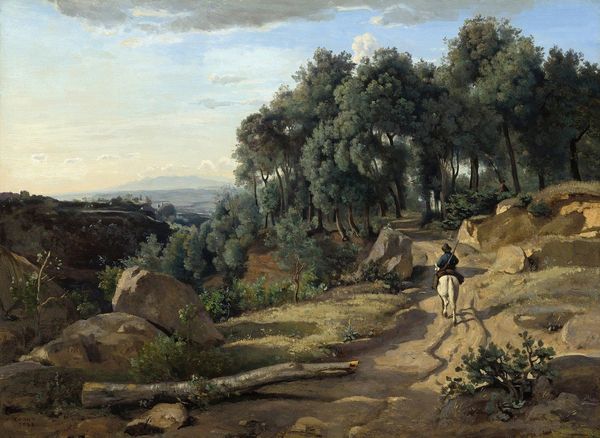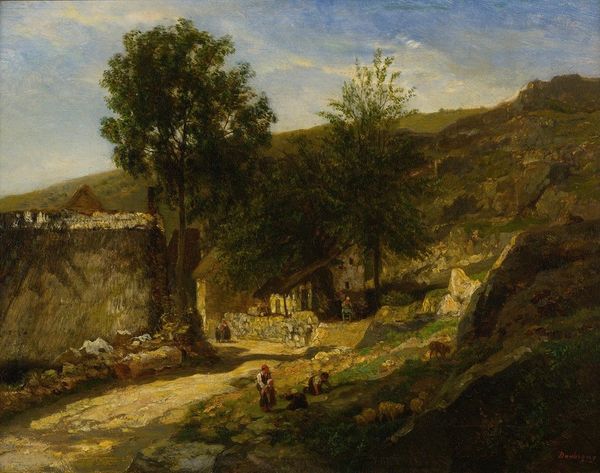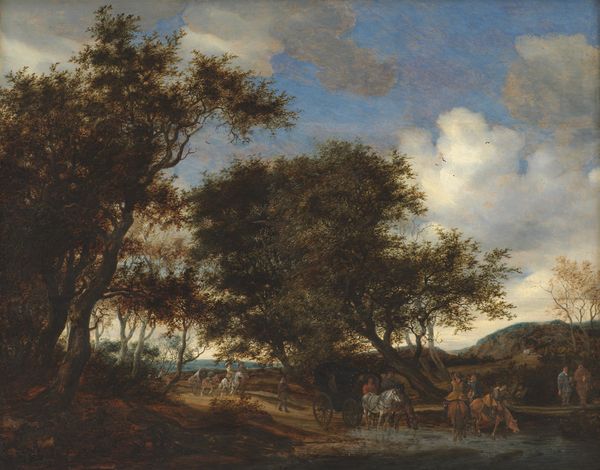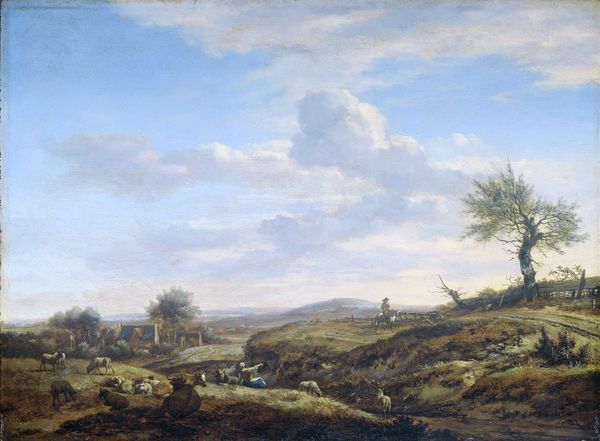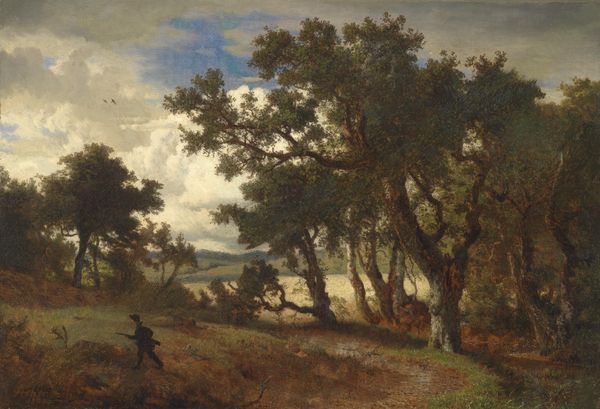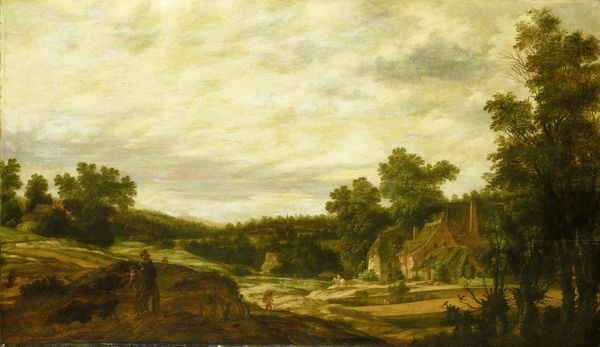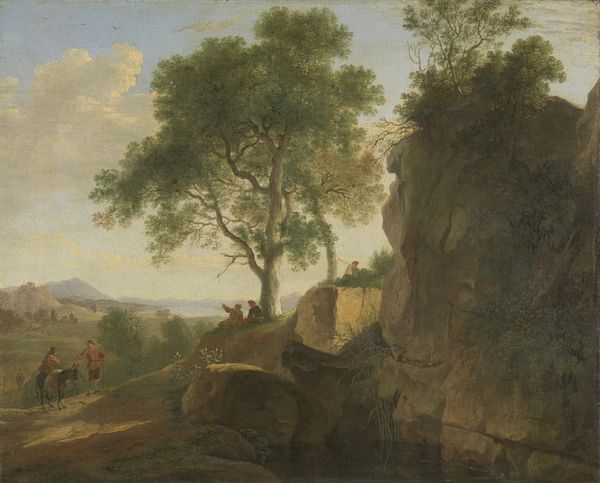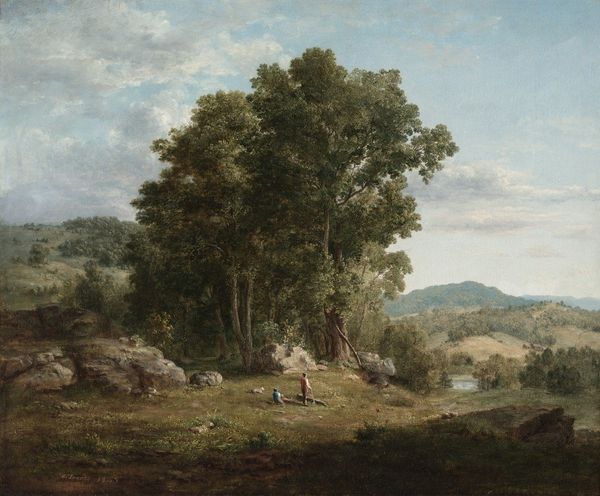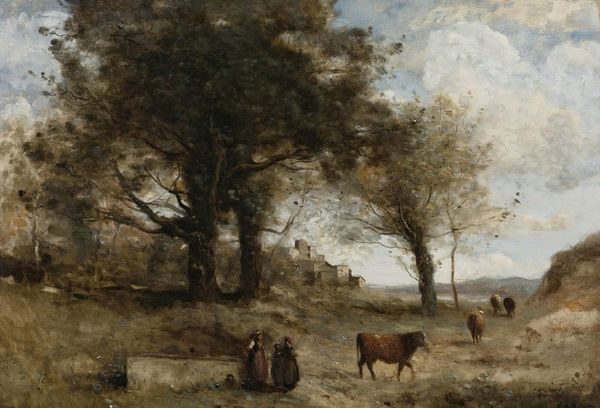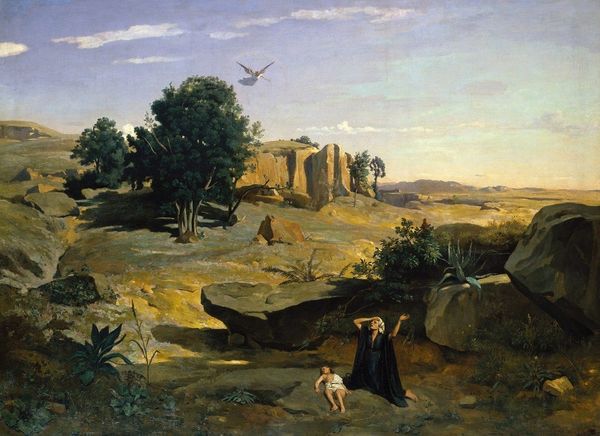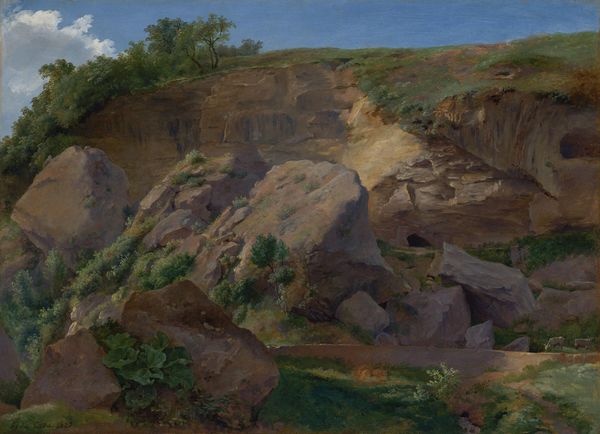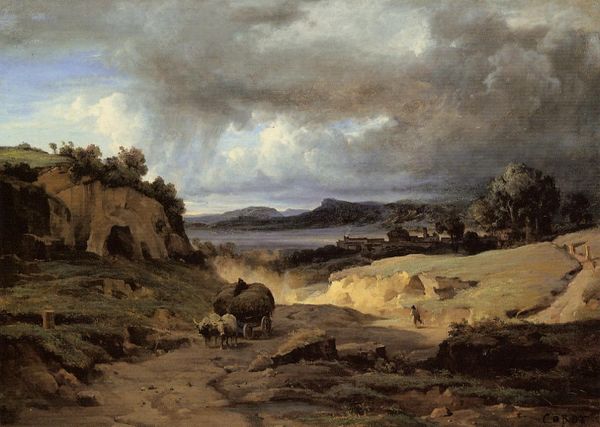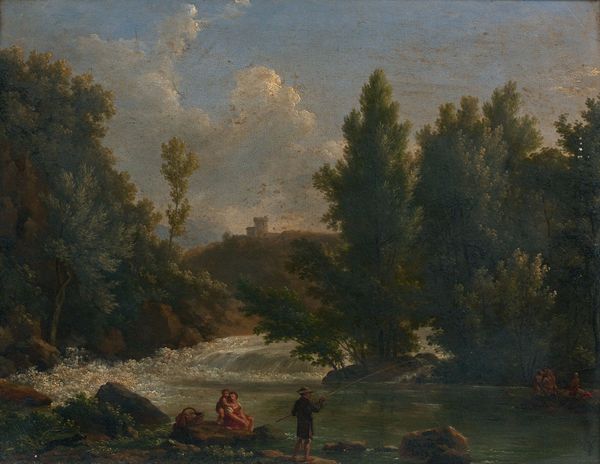
plein-air, oil-paint
#
plein-air
#
oil-paint
#
landscape
#
oil painting
#
romanticism
#
history-painting
#
realism
Copyright: Public Domain: Artvee
Curator: This is Camille Corot's "La Cervara, the Roman Campagna," an oil on canvas likely completed between 1830 and 1831. What are your initial impressions? Editor: Earthy, isn't it? It feels like I'm stepping back into a simpler, perhaps harsher time. The palette is mostly browns and grays, though the sky has a gentle blueness. A quiet sort of loneliness permeates the whole scene. Curator: It’s a classical landscape infused with a modern sensibility. The Roman Campagna, a vast plain surrounding Rome, was often represented in art as both an Arcadian paradise and a testament to historical grandeur, something Corot clearly understood. But he gives us a starker vision. Notice the human figures and how small and unassuming they appear, especially next to the towering natural rock formations. Editor: Good point! Those rock formations have real presence; they almost feel like ancient monuments. The small figures definitely suggest humanity’s insignificance in the face of history and the natural world. And there’s that smokestack in the background adding a slightly ominous vibe to the overall mood. Do you read it the same way? Curator: I find it intriguing! Consider the cultural memory of the Campagna: Corot painted this region numerous times, following in a tradition established by earlier landscape painters like Claude Lorrain and Nicolas Poussin, who used the same terrain to evoke classical ideals. Here, the tower symbolizes civilization. Editor: Absolutely. And isn’t it wild how he balances those classical references with his plein-air approach, that commitment to painting directly from nature? It makes the image feel so grounded, so real, while also echoing grand narratives from art history. That smoky industrial presence speaks to something contemporary at the same time that you feel transported. A push-and-pull sort of thing! Curator: Yes, the interplay between classical and contemporary elements is what makes Corot's Campagna so fascinating. He presents the landscape as both a site of historical memory and a space undergoing transformation, almost in the way we carry our past in our psyche as we adapt to contemporary life and all its trappings. Editor: So true! It's a haunting image, capturing both the eternal weight of history and the fleeting nature of the present. I'll carry this feeling with me!
Comments
No comments
Be the first to comment and join the conversation on the ultimate creative platform.
